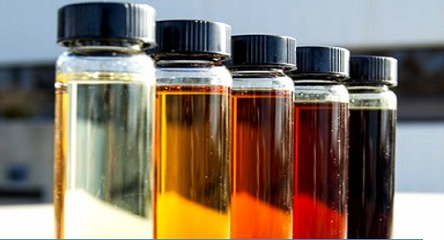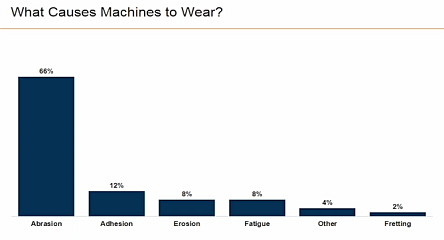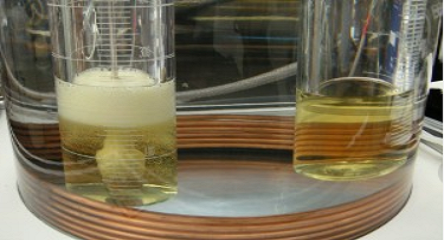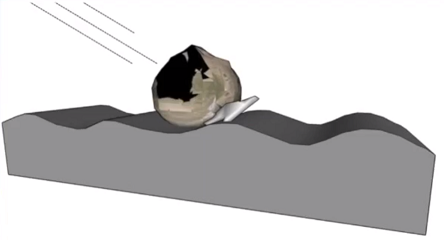Two Minute Tips
What Failed Demulsibility Results Mean
Demulsibility, or more correctly, water separation, is a measure of a lubricant’s ability to separate from water. Lubricants and water have a natural tendency to separate because most basestock molecules are non-polar, while water molecules are polar and will seek each other out instead of mixing with the basestock.
Water can exist within the lubricant in three different forms: dissolved, emulsified or free water. All lubricants contain some amount of dissolved water, with concentrations of 100 to 500 ppm considered normal, depending on lubricant type and age, yet not affecting the clarity of the fluid. Once the concentration exceeds the saturation point of the fluid, the water molecules will form droplets and impart a haze or cloudiness to the fluid. At even higher concentrations, the water droplets will become larger enough to separate from the mixture and form its own phase. Dissolved, emulsified and free water in a lubricant are analogous to humidity, fog and rain.
Demulsibility testing uses a 40 ml sample of lubricant mixed aggressively with 40 ml of water (a 50/50 mixture is well beyond the saturation point or any lubricant), for 5 minutes, to force an emulsion to occur. The mixture is then observed at 5 minute intervals until the emulsion layer is 3 ml or less. The results are reported as ml of oil – ml of water – ml of emulsion and time (in 5 minute intervals) to < 3 ml of emulsion. A great result would be 40-40-0 (20) indicating full separation of oil and water, with no emulsion, achieving less than 3 ml of emulsion after more than 15 (but less than 20) minutes.
Failing results can range from a relatively innocuous 43-33-4 (30) indicating that the emulsion layer did not reduce to less than 3 ml within 30 minutes, to the obvious 0-36-44 (30) indicating only an emulsion and water mixture. In either case, they may have both failed for the same reason, namely contamination. The most difficult part interpreting demulsibility results is not identification of a failed result, but rather identifying the cause.
Essentially, any polar contaminant will decrease demulsibility, with the most common sources being top-off with fluids having a different additive chemistry (an ExxonMobil study showed contamination of 3 ppm of a calcium-based detergent impacted results), residual cleaning or flushing products after maintenance, airborne particulate and water. Demulsibility can also be affected due to an increase in insoluble polar contaminants (e.g. varnish precursors) formed by degradation. Therefore, failing demulsibility should be checked against any changes in additive and contaminants by elemental spectroscopy, particle count, water content and MPC results.
There are several methods for remedying demulsibility: 1) Filtration of the suspected contaminants, be they water (though coalescing technology will perform less efficiently in fluids with poor demulsibility), particulate or insolubles; 2) Addition of a demulsibility additive; however, these are met with mixed success as they tend to be polar as well, and may actually decrease demulsibility; 3) Increasing solubility using a solubility enhancer (e.g. Fluitec’s Boost VR); 4) Bleed-and-feed or sweetening with the original fluid as a temporary fix; or 5) Bleed-and-feed or sweetening with a compatible API Group I basestock*.
*This option has shown some promise in systems filled with lubricants made from API Group II and III basestocks, and sweetened by 5-30%. Since the demulsibility of water and oil is based on a difference in polarity between oil and water, reducing this disparity by introducing a more polar fluid has proven to significantly improve the results of demulsibility testing.






